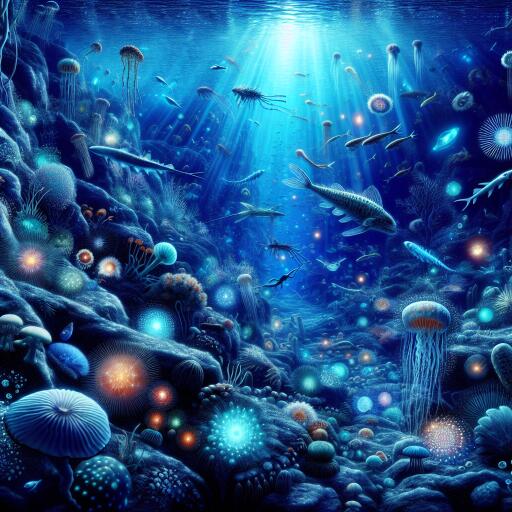
Marine Mystery Solved: Ancient Origins of Bioluminescence Uncovered
In a groundbreaking study, scientists have shed light on the ancient roots of bioluminescence, revealing that this captivating ability dates back to at least 540 million years ago. This discovery significantly predates prior estimates and underscores the evolutionary significance of bioluminescence, particularly among a group of marine invertebrates known as octocorals. This group includes the enigmatic soft corals, sea fans, and sea pens, many of which are capable of producing a mesmerizing glow from deep within the ocean’s depths.
The research, detailed in the prestigious Proceedings of the Royal Society B, attributes the earliest instance of bioluminescence to these ancient marine dwellers, setting a new benchmark for the origin of light production in animals. Until this revelation, the earliest recorded emergence of bioluminescence was believed to be around 267 million years ago in marine crustaceans. However, through meticulous genetic analysis and fossil examination, scientists have now pushed this timeline back by nearly 300 million years.
Bioluminescence, the process by which living organisms produce light through chemical reactions, is a phenomenon that has captivated scientists for ages. It occurs in various forms across the animal kingdom, serving a multitude of functions such as camouflage, communication, mating, and predation. Despite its widespread occurrence, the evolutionary origins and reasons for the development of this luminous trait have remained elusive.
The study’s focus on octocorals revealed that these creatures, among the planet’s oldest bioluminescent organisms, likely developed the ability to produce light much earlier than previously thought. By constructing a comprehensive evolutionary tree using genetic data from 185 species of octocorals and integrating it with information from well-dated fossil records, researchers were able to trace back the lineage of bioluminescence in these marine invertebrates.
Through a combination of ancestral state reconstruction and statistical analysis, the team concluded that the ancestral lineage of all octocorals was highly likely to have possessed the ability to bioluminesce approximately 540 million years ago. This predates the previously oldest known bioluminescent animals and suggests a significant evolutionary advantage that has contributed to the endurance and diversification of octocorals through geological epochs.
This study not only illuminates the ancient origin of bioluminescence but also emphasizes its potential evolutionary benefits. The persistence of this trait over such a vast expanse of time suggests it may have played a crucial role in the survival and evolutionary success of octocorals. Further research is anticipated to delve into the specific ecological roles and functions of bioluminescence, enhancing our understanding of this enigmatic trait.
Apart from unraveling a longstanding marine mystery, this discovery holds profound implications for the conservation of octocorals, which face threats from climate change, overfishing, and habitat destruction. Understanding the evolutionary history and ecological importance of bioluminescence can provide valuable insights into the resilience and adaptability of these organisms, informing more effective conservation strategies.
This significant leap in our knowledge underscores the importance of evolutionary biology in understanding the complexities of life on Earth. By peering into the ancient past, scientists are unraveling the mysteries of the deep, bringing us closer to comprehending the intricate web of life that thrives beneath the ocean’s surface.
The insights gleaned from this study pave the way for future research endeavors aimed at decoding the evolutionary story of bioluminescence and its role in the natural world. As we continue to explore the uncharted territories of our planet, discoveries like these remind us of the wonders that await and the enduring quest for knowledge that drives scientific inquiry forward.





Leave a Reply